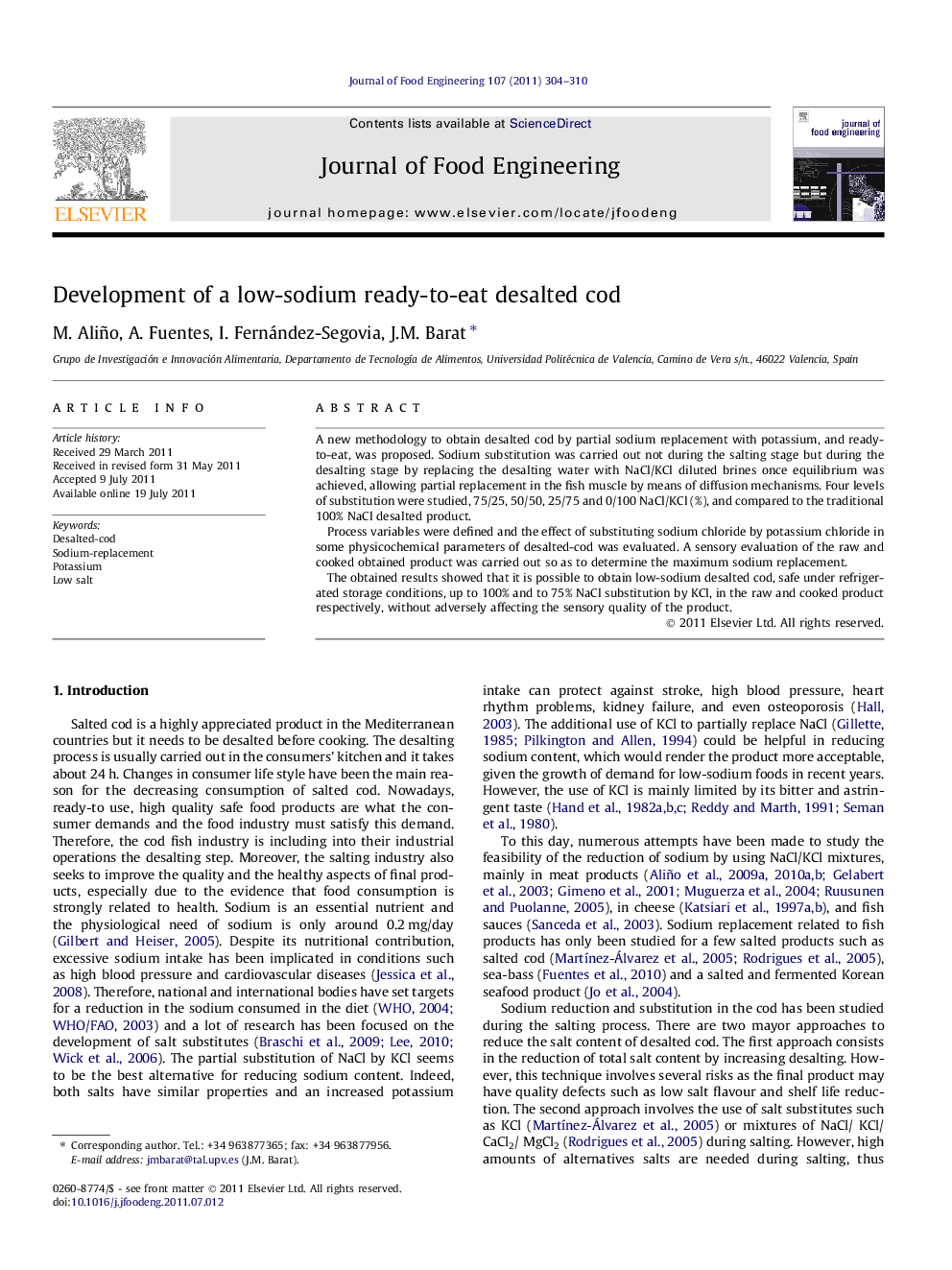| Article ID | Journal | Published Year | Pages | File Type |
|---|---|---|---|---|
| 223394 | Journal of Food Engineering | 2011 | 7 Pages |
A new methodology to obtain desalted cod by partial sodium replacement with potassium, and ready-to-eat, was proposed. Sodium substitution was carried out not during the salting stage but during the desalting stage by replacing the desalting water with NaCl/KCl diluted brines once equilibrium was achieved, allowing partial replacement in the fish muscle by means of diffusion mechanisms. Four levels of substitution were studied, 75/25, 50/50, 25/75 and 0/100 NaCl/KCl (%), and compared to the traditional 100% NaCl desalted product.Process variables were defined and the effect of substituting sodium chloride by potassium chloride in some physicochemical parameters of desalted-cod was evaluated. A sensory evaluation of the raw and cooked obtained product was carried out so as to determine the maximum sodium replacement.The obtained results showed that it is possible to obtain low-sodium desalted cod, safe under refrigerated storage conditions, up to 100% and to 75% NaCl substitution by KCl, in the raw and cooked product respectively, without adversely affecting the sensory quality of the product.
► Sodium partial replacement. ► Ready to eat cod. ► Desalted cod development. ► Desalting equilibrium. ► Low salt fish.
